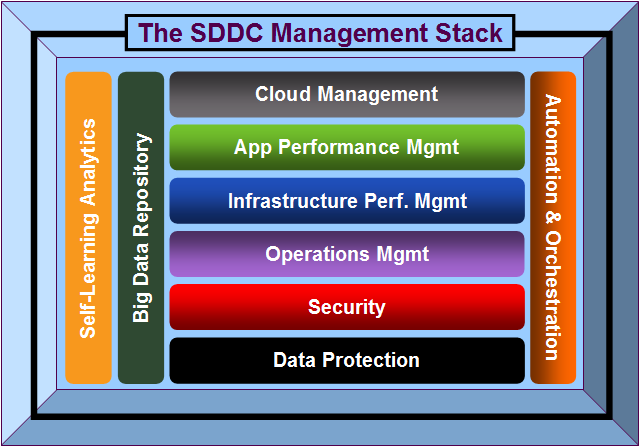
Bernd Harzog, an Analyst for The Virtualization Practice and CEO and founder of APM Experts, has written an interesting piece lately (“SDDC Application Performance Management,” April 30, 2013) about Software Defined Data Centers (SDDCs) and how this coming shift in underlying networking technologies will affect running and monitoring your applications.
Software Defined Data Center (SDDC) refers to a data center where all infrastructure is virtualized and delivered as a service, including core components such as networks, servers and storage. This is different from traditional data centers where the infrastructure is typically defined by hardware and devices. SDDCs are seen as the next step in the evolution of virtualization and Cloud computing, as they provide a solution to support both legacy enterprise applications and emerging cloud services. Control of the data center is automated by software – meaning hardware configuration is maintained through intelligent software systems that can translate application and service level requirements.
SDDC is a relatively new computing phrase, but a number of vendors have already announced Software-defined data center products, including the VMware vCloud Suite.
One core component of SDDC is Software-defined networking (SDN). SDN is an approach to building data networking equipment and software that separates and abstracts elements of these systems. SDN allows system administrators to network services more easily through abstraction of lower level functionality into virtual services. Simply put, what used to require hardware can now be done in software.
It’s a hot topic for a good reason. It’s potentially a Cisco killer.
While this shift may bring important benefits in cost and flexibility, it will also bring greater levels of complexity. Application Performance Management (APM) for SDDCs will be critical. Harzog states, “Running rapidly changing applications on a highly dynamic software infrastructure will lead to intractable problems unless proper APM tools are deployed in your SDDC.
And what happens when something goes wrong? If you think you can point your finger at SDN, you might want to think again.
“Just like Citrix was always blamed for the performance of applications delivered over Citrix, and just like VMware was (and is) always blamed for the performance of newly virtualized applications, the SDDC (and its owners, IT Operations) are going to be guilty until proven innocent when it comes to the response time of applications running on the SDDC. This will again require that IT Operations have tools that monitor the response time, throughput, and error rate of every application in production.”
Harzog’s post covers lists of APM solutions and their various strengths. It’s a great overview of the solutions available. In general, he splits them into two large groups by suggesting that you first understand your needs. Do you have custom-built applications and will you therefore be rewriting code when issues arise? If so, this is a DevOps issue. Do you have purchased applications? If so, this is an AppOps issue. For each one, he lists the best solutions on the market and their main features.
We think INETCO Insight stands out nicely as an AppOps solution, with our product focus being “Monitor every application in production irrespective of source and deployment,” and our supported app types “All TCP/IP regardless of platform”. The latest version of the software is Cloud ready, and will be made generally available to the public next week.
Harzog ends with a good overview section on the core issues and the best process for choosing in “How to Choose an SDDC Application Performance Management Solution”.
Harzog makes sure you ask the right questions up front. Talk to us and we’ll make sure you get the right answers.
To learn more on how network-based application performance monitoring can and should evolve to monitor applications deployed across private, public, and hybrid cloud environments, contact us.
